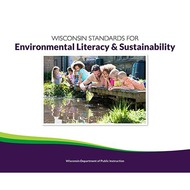Connect, Explore, and Engage: John Muir's Boyhood Neighborhood
(View Complete Item Description)John Muir is known as the father of our National Parks. His boyhood was spent in Marquette County, Wisconsin where he found inspiration in the wilderness around him. In this Unit, students will learn about John Muir’s boyhood neighborhood and actively work to preserve it, connect with Muir’s many accomplishments, understand different environmental philosophies, and saunter in nature while observing and reflecting on the world around them. Students will Connect, Explore, and Engage through intentional time in nature, reflective writing, reading inspirational passages by Muir, and using technology to document changes over time.
Material Type: Unit of Study




















